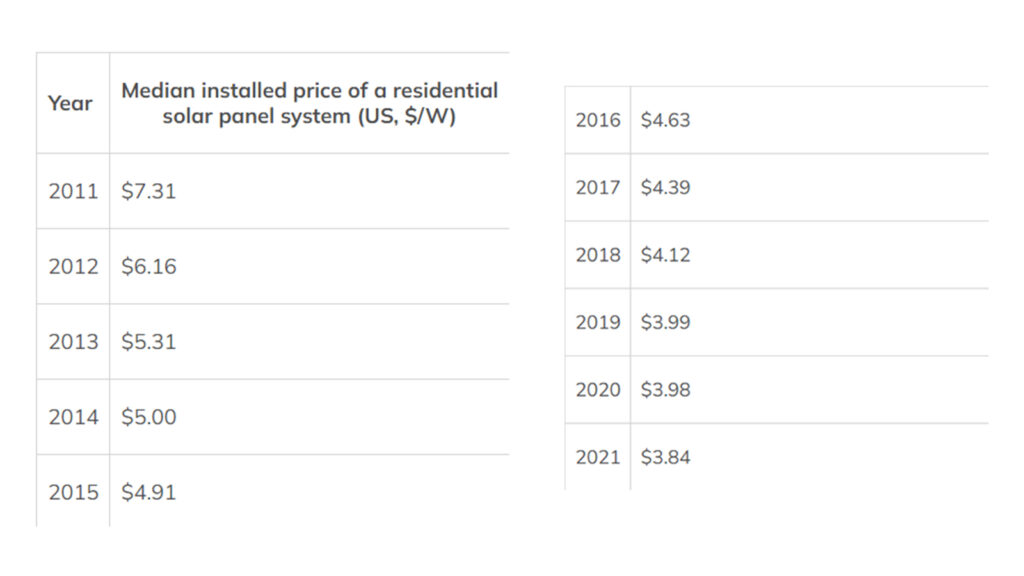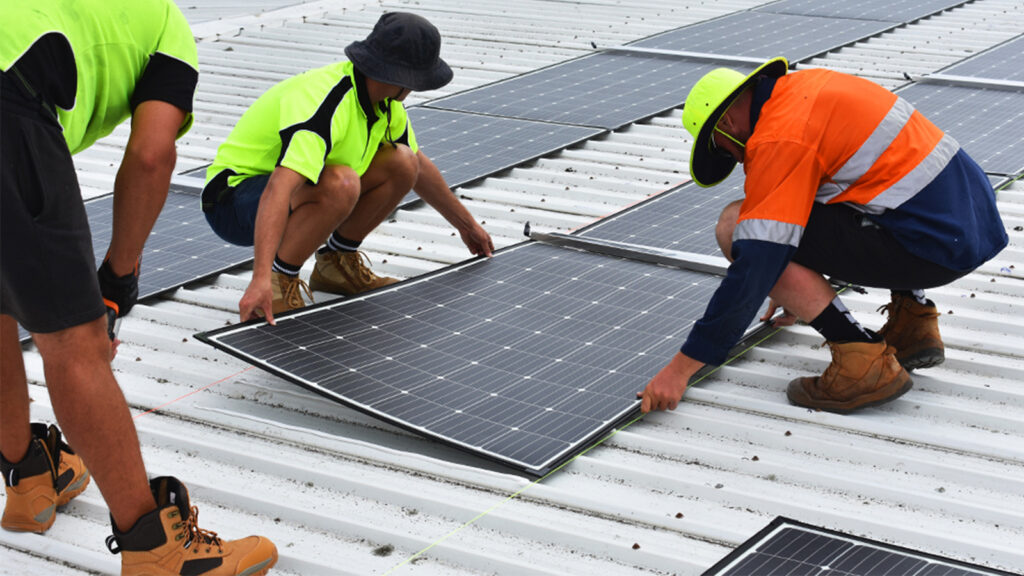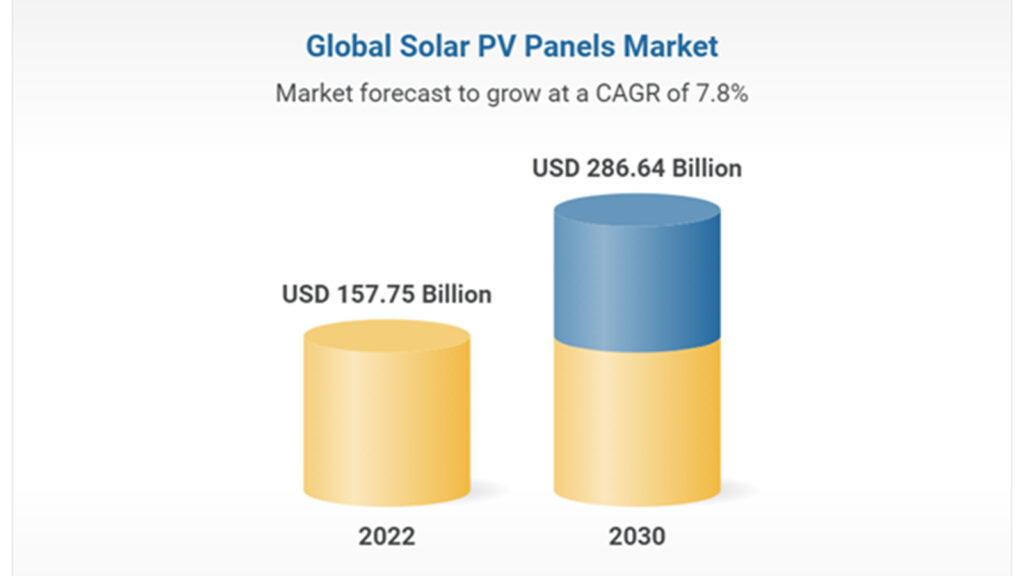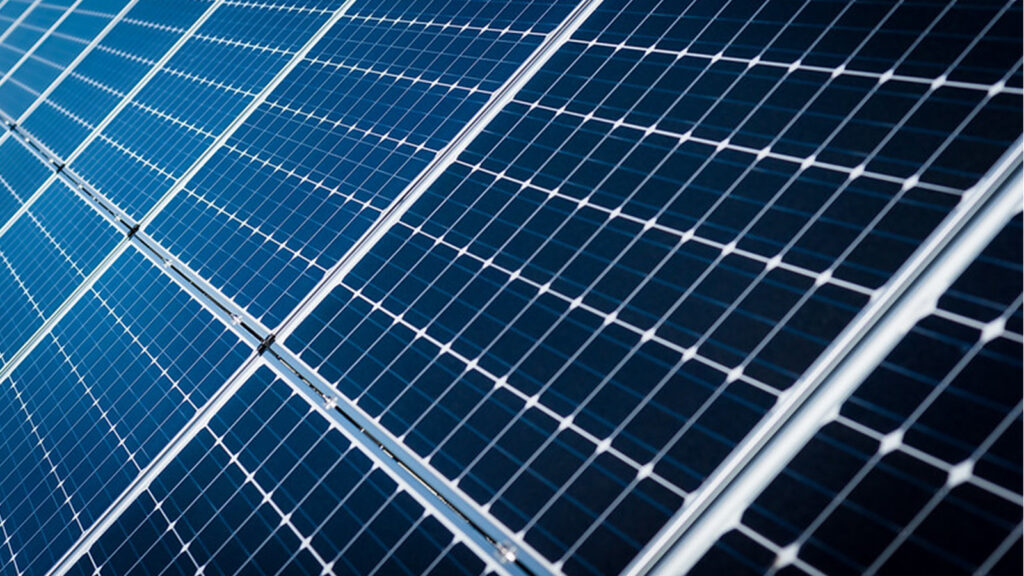Changes in solar panel prices in recent years:
After a difficult 2022, the Ukraine-Russia war and its energy crisis have caused the cost of solar equipment and installation labor to increase. This is fantastic news for the cost of solar equipment and labor for installation.
Sharp price drops for solar panels are typical. The installed cost of home solar panel systems has decreased 39 percent over the previous ten years, from $6.20 per watt in 2012 to $3.80 per watt in 2021, according to Berkeley Lab’s Tracking the Sun report for 2022. The decreasing cost of solar panel modules has been the primary driver of this trend. solar panel module prices have decreased by 92% since 1998.

According to Berkeley Lab’s 2022 edition of the Tracking the Sun report, the installed price of residential solar panel systems has fallen 39 percent over the past decade, from $6.20 per watt in 2012 to $3.80 per watt in 2021. This trend has been driven by declining solar panel module prices over time. Since 1998, the cost of solar panel modules has fallen by a whopping 92%.
Solar panel module prices have declined by 47%, from $1.03/watt in 2012 to $0.55/watt in 2021.And after that the prices is continuing to drop.
Factors affecting the price of solar panels:
1. Exchange rate:
the exchange rate on the price of solar modules have two main channels: material imports and oil imports. First, by importing solar module materials, the manufacturing cost of solar modules is affected by the exchange rate.
The raw material for solar modules is polysilicon. Polysilicon is first processed into ingots and then cut into wafers. These wafers are integrated into the solar cell, which serves as the basic energy conversion unit. Finally, the solar cells are assembled into solar modules.This’s why silicon is important in the manufacturing of PV panels.
The Nemet Institution (2005) used a model with polysilicon as the independent variable and solar module prices as the dependent variable. The results show that silicon costs explain about 12% of the “learning-by-doing” effect. Similarly, an empirical analysis by the Pillai Institution (2014) shows that for every 1% decrease in silicon prices, solar module prices decrease by 0.9%. Thus, both material prices and the strength of the currencies of the countries that influence the cost of material imports have an impact on solar module prices.
2. Oil prices:
We need to realize that renewable energy is being developed as a substitute for oil.
Global oil prices have suddenly increased since 2002. The desire for alternate energy sources grows as oil prices do. As a result, the “primary effect” or “substitution effect,” which is the effect of oil prices, cannot be overlooked in analyses of the pricing of renewable energy sources. PV cost is also indirectly impacted by oil. Energy, such as oil, is seen as a production input alongside labor and capital.
Increased energy prices might hasten the development of technology. Usually, more R&D drives down the cost of renewable technologies. Thus, increased oil prices lead to higher R&D spending, which lowers the cost of solar panels.
An empirical analysis of the influence of oil prices on the advancement of renewable energy technology is provided by Cheon and Urpelainen (2012). The analysis demonstrates that rising oil prices are associated with an increase in public spending on renewable energy R&D and patents.A study by Wong, Chia, and Chang (2013), who examined the elasticity of energy R&D in relation to fluctuations in oil prices, came to similar conclusions. The findings demonstrate a positive correlation between oil prices and R&D in renewable energy. Therefore, increased oil prices could hasten technological development and result in reduced solar panel costs.
3.Cost:
(1) Installation Costs
Berkeley Lab’s Tracking the Sun report (2022) shows that the installed cost of solar panel systems has dropped by 39% over the past decade. in 2012, the median installed price of a residential solar panel system (in the U.S.) was $6.2/watt. in 2021, the median is $3.8/watt. Over the past decade, the installed price of residential solar panel systems has declined by 39%, from $6.2/watt in 2012 to $3.8/watt in 2021.

(2) Soft Costs :Labor costs and other operating costs.
The balance between system and soft costs is about 80% of the total system cost. The solar panel module cost is about 15% and the inverter cost is 5%.
Will the cost to install solar panels keep decreasing?
To date, the decline in the installed price cost of solar panels has been due to the significant decline in the price of solar panel modules over time.
While solar panel module prices may continue to fall in accordance with Swanson’s Law, they have fallen to nearly $0.50/watt and represent only 15% of the installed cost of solar panels.
As we move forward, any further significant reduction in cost will need to come from one of the other price components.
Inverter prices, balance of system costs, and soft costs, however, have not decreased significantly over time relative to development history. As a result, it is assumed that a time will soon come when the price of installing solar panels will start to level off. The market for solar panels is expanding quickly, and customers have several options. In this instance, choosing a reputable, reasonably priced company is crucial when buying solar panel panels.

Since 2008, Maysun Solar has specialized in producing high quality photovoltaic modules. Our wide range of all-black, black frame, silver and glass-to-glass solar panels utilize half-cut, MBB, IBC and Shingled technologies. These solar panels offer superior performance and stylish designs that blend seamlessly into any building. Maysun Solar has successfully set up offices and warehouses in many countries and has established long-term relationships with excellent installers! For the latest module quotes or any PV related inquiries, please contact us. We will be happy to serve you.

How to Effectively Clean and Intelligently Maintain Photovoltaic Systems for Optimal Performance?
Explore how scientific cleaning and intelligent maintenance can ensure the efficient operation of commercial and industrial photovoltaic systems. Practical advice covers module cleaning frequency, monitoring system configuration, and long-term strategies for energy savings and performance enhancement.

2025 European Photovoltaic Policy Map: Deployment Paths and Regional Strategies for Commercial and Industrial Photovoltaics
A comprehensive analysis of the 2025 European commercial and industrial photovoltaic policy map, focusing on deployment strategies, incentive comparisons, and zero-investment models to support businesses in achieving an efficient and green transition.

Empowering Factories with Solar Energy A Strategic Tool for Controlling Production Electricity Costs
Commercial and industrial solar is becoming a key solution for factories to reduce electricity costs and hedge against price fluctuations. This article systematically analyzes its deployment models, cost advantages, and sustainable value pathways.

How Businesses Can Offset Carbon Taxes with Solar Power
This article analyzes the latest carbon tax policies and photovoltaic deduction strategies, helping European businesses legally reduce taxes, increase profits through solar investment, and achieve a win-win situation for both economy and environment.

Forecast and Response: Seizing the Next Decade’s Growth Dividend in Europe’s Commercial and Industrial Photovoltaics Market
Maysun Solar analyzes the growth trends of commercial and industrial photovoltaics in Europe over the next ten years, from policies and ESG to technological innovation, helping companies seize the initiative in the energy transition.

How to Calculate Solar System ROI and Optimize Long-Term Returns?
Solar power is becoming a key solution for businesses to reduce costs and improve efficiency. Accurately calculating ROI and optimizing long-term returns are essential to maximizing investment value.



